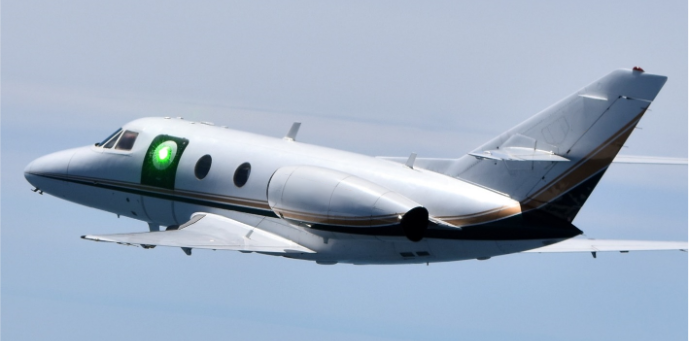
The Air Force Research Laboratory (AFRL) announced 30 May it has successfully flight-test a novel beam director concept for use with aircraft-based directed energy laser systems .
AFRL’s Hybrid Aero-Effect Reducing Design with Realistic Optical Components (HARDROC) team has successfully developed and tested a low-power, sub-scale beam director.
Over the course of flight-testing, the aircraft achieved high speeds while a range of sensors were deployed to gauge aerodynamic disturbances. The results showed the HARDROC beam director to have “enlarged the envelop airborne directed energy systems can operate in”, according to an ARFL release, with a 360-degree field of regard, across a range of speeds, and with a reduced size, weight and power requirements when compared to other turrets.
Dr. Mike Stanek, Technical Advisor for the Aerospace Systems Directorate’s Integrated Systems Branch, said that the HARDROC turret’s successful flight demonstration has overcome a significant technological obstacle in enabling high-power lasers to be operated on high-speed aircraft for various Air Force missions. “Integration of the low-SWaP HARDROC turret would allow less laser power to be lost to aero-effects, thus enabling mission performance compared to other types of integration strategies.”
CFD simulation guided laser beam development
For several years the HARDROC team have worked with different aerodynamic flow control techniques for reducing the optical and mechanical distortions that occur when a laser beam is emitted from a high-speed airborne platform. After undergoing ground-testing in an environmental chamber and wind-tunnel to ensure its functionality and performance under load, the design was finally put to the test on a business jet in mid-2022.
“Based on our computational simulations and wind-tunnel results, we felt very confident the flow-control would perform well,” said Rudy Johnson, the programme manager of HARDROC. “But the biggest question in our mind was whether these flow-control techniques could be used with the sensitive optical components required for an advanced directed energy system. HARDROC answered that question with an emphatic yes.”
Dr. Scott Sherer, who is the computational fluid dynamic (CFD) lead for the HARDROC programme, said that advanced CFD simulation techniques were used to demonstrate a significant decrease in aero-effects at various speeds and angles of observation. “We effectively utilised a substantial amount of computational hours provided by the Department of Defense High Performance Computing Modernisation Office to establish which flow-control techniques could work, which techniques were worth pursuing and which were not.”
AFRL has contracted with MZA Associates, a company specialising in the modelling, analysis, design, development, integration, and testing of High Energy Laser (HEL) and advanced optical systems. The aim of the collaboration is to design a sub-scale system that can be used either in a wind-tunnel or on an aircraft.
The AFRL contracted Lockheed Martin in 2017 to develop compact airborne high-energy laser capabilities as part of the self-protect high-energy laser demonstrator (SHiELD) programme.








